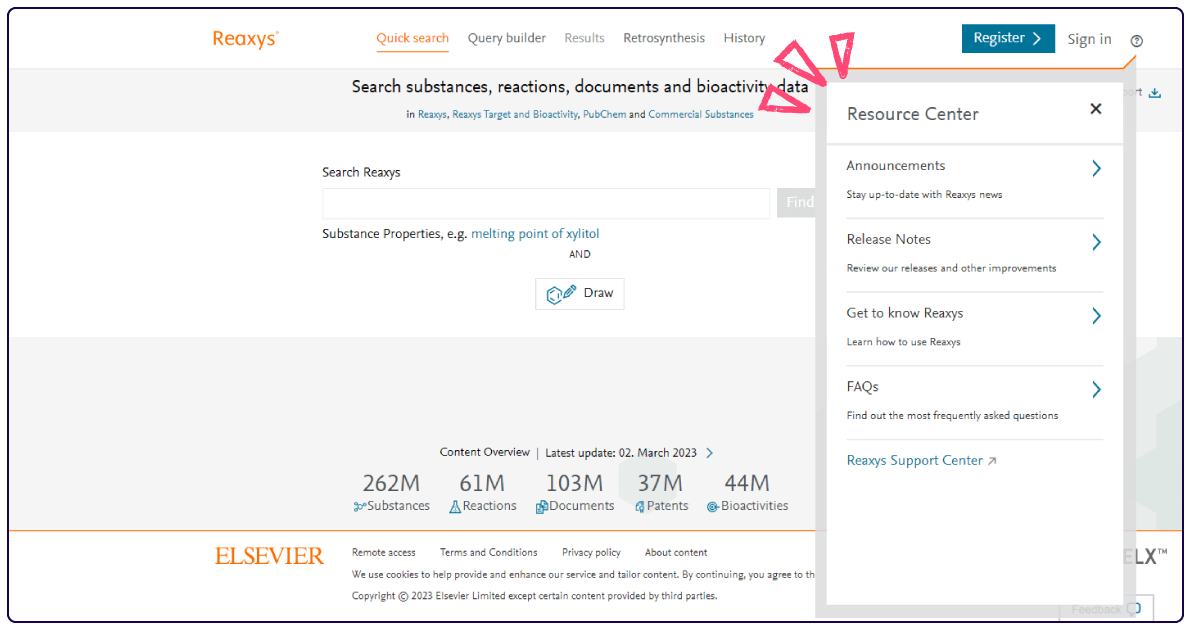How Elsevier built an award-winning in-product help center for its users

Results
67% reduction in time to first use on key features
2 point increase in NPS
Products used
Experience Pendo, personalized to you
Get a demoThe most impactful innovation rests on a foundation of data and insights. This is as true for academia and medicine as it is for the business world. And it’s what grounds the mission of Elsevier, a storied 140-year-old publishing and information analytics company that provides researchers and medical professionals with scientific, technical, and medical content to make better decisions and advance their fields.
After analyzing ways to strengthen the business, Elsevier saw the need to focus on building a comprehensive support solution to meet users where they are–within the products themselves. They wanted to make sure that users would be able to successfully navigate through their products every time they needed to, and that the support solution they created could easily scale across the more than 90 products on which they used Pendo.
“We [used Pendo to] explore multiple customer journeys to truly understand where they were getting stuck,” said Tommy Rahardjo, a senior digital CX and capabilities manager at Elsevier.
The team knew that its web-based support center received around 9 million visits per year, and that 2 million of those users sought further support by reaching out to its contact center to resolve issues. They hypothesized that a suboptimal user experience was contributing to these numbers, and prioritized creating a better one by fundamentally rethinking their support model—and leveraging Pendo in the process.
Creating a support system to meet users where they are
Elsevier discovered that because their existing model required customers to leave the product in order to get the necessary support, it was causing disruptions to the work they were trying to complete. “We had to make sure that we help our customers navigate through our support content quickly, and that means making sure that that content is located within the product itself,” Rahardjo said.
Using Pendo’s Resource Center capability, the Elsevier team created a custom in-app support solution they called In-Product Help. The solution gave users control over the support content they’d engage with, including a self-service onboarding experience. In building In-Product Help, the Elsevier team had three strategic pillars:
- Flexibility: Elsevier did not want to push any specific content at users or require them to consume the content right away. Rather, Rahardjo explained, they wanted to let users themselves choose what information mattered to them, and when.
- Simplicity: In-Product Help was designed to empower customers to use products effectively without having to remember all the various technicalities of the product itself. “Users can visit the product, maybe not remembering a few things, and then get access to our contextual help and guides, in order for them to be familiar with that feature again,” Rahardjo said.
- Consistency: Elsevier wanted to create a seamless experience for customers, no matter which touchpoint they were coming from to draw on support. Deploying In-Product Help over multiple products meant the need to create consistency within the apps. “We made sure that the styling, and the way we deploy that information, would be familiar to users and also fit to the domain it was presented in,” Rahardjo noted.
What a better user experience looks like
After using Pendo to bring support in-app, Elsevier saw a stunning impact on the user experience. In-Product Help has fundamentally transformed how customers engage with their products for the better. Since its launch, queries to Elsevier’s external support center have dropped by 27%. At the same time, users’ average time to first use on key features has dropped by 67% thanks to the addition of self-service onboarding guides. As they feel better equipped and empowered to engage with Elsevier products, customers’ satisfaction has grown as well. Net Promoter Score (NPS) has increased by 2 points since In-Product Help’s launch.

After seeing such a big impact, the Elsevier team is busy expanding In-Product Help to all 90+ of its products that have Pendo on them. “Pendo has been so helpful for us to deliver experiences that help Elsevier users understand our product in a better way,” Rahardjo explained. The result is a user base better equipped and empowered to drive innovation forward in their fields.